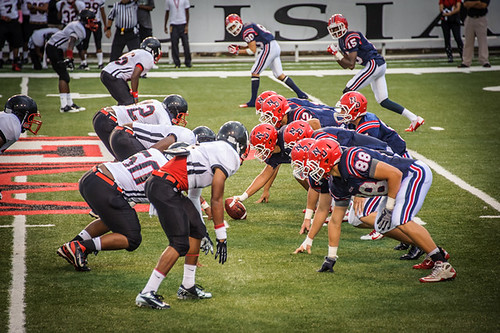The thrill of high school football is a staple of American culture, but beneath the cheers and the bright lights lies a more sobering reality.An increasing amount of research has brought attention to the potential health hazards linked to American football, specifically the consequences of repetitive head impacts. Although the risks of concussions have been widely recognized, there has been less focus on the cumulative impact of minor, sub-concussive blows that players often endure.

The researchers enrolled 72 male high school athletes for the study, splitting them into two groups based on their sports involvement. 58 of these athletes were active in American football and were the primary focus due to their exposure to repetitive head impacts. The remaining 14 athletes, involved in sports with less impact, served as the control group. Using resting state functional MRI (rs-fMRI), the researchers observed brain activity and focused on changes over time in relation to the number and severity of head impacts, monitored using head-mounted sensors.
The implications of these changes are far-reaching. While a single head impact might not be cause for alarm, the cumulative effect of repeated blows – a common occurrence in sports like football – has been linked to long-term cognitive decline and an increased risk of neurological disorders. The specter of chronic traumatic encephalopathy (CTE), a condition characterized by a buildup of pathogenic tau protein in the brain, looms large over retired soldiers and football players alike. With CTE associated with mood disorders, cognitive decline, and motor impairment, the concern extends to whether such damage could manifest in youth players.
The study’s focus on grey matter, which forms the brain’s outer layer and is directly impacted during collisions, revealed that the organization of this neural tissue changes following a season of football. These alterations, which correlated with the number and position of head impacts measured by helmet-mounted accelerometers, were concentrated in regions responsible for functions such as memory, attention, and cognition.
While cognitive function appeared stable over the season, the long-term effects of these microstructural changes remain uncertain. Nan-Ji Gong, a postdoctoral researcher at UC Berkeley, suggests that the rapid development of young brains might counteract the impact-induced alterations. Nevertheless, the researchers advocate for caution and regular cognitive and brain monitoring for young athletes.
The broader implications of this research are echoed in findings from the Indiana University School of Public Health, where high school football players exhibited worrying changes in brain tissue, including increased sulcal depth and gyral elevation in regions associated with decision-making, behavior, and language. These structural changes, which typically emerge in middle age, were alarmingly present in adolescent athletes.
As the debate over the safety of youth impact sports continues, the research underscores the need for a nuanced understanding of the risks involved. While the immediate benefits of team sports are clear, the potential long-term costs to brain health cannot be ignored. The findings from these studies serve as a clarion call for further investigation and a reevaluation of how we protect the developing brains of young athletes.
Related posts:
Football Can Damage the Brains of High-School Players
Alarming neuroscience research links high school football to significant brain connectivity changes





